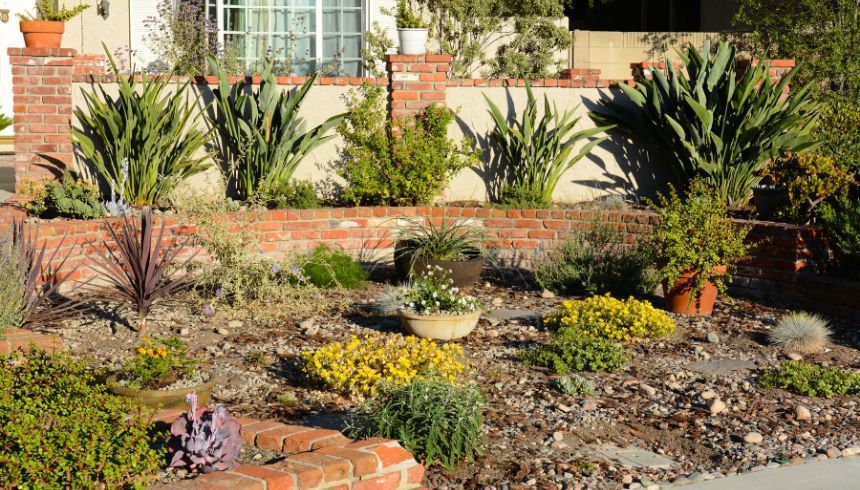5 Ways To Cut Back on Landscaping Water Consumption

Homeowners must consider how they can live sustainably; for example, landscaping accounts for a significant portion of water usage, especially in drought-prone areas like Southern California. Adapting your outdoor space to consume less water doesn’t just save a precious resource; it also saves you money and time. Here are five ways to cut back on landscaping water consumption.
1. Adopt Drought-Tolerant Plants
Why not choose plants for your garden that are beautiful and strong enough to thrive with minimal water? Drought-resistant plants—lavender, yucca, or California poppies—can survive in arid conditions and usually need infrequent watering once established. California drought-resistant landscaping is one way to cut back on water usage.
What To Know About Drought-Tolerant Plants
These plants develop extensive root systems that can access water reserves deep in the soil, reduce evaporation, and usually need very little water to survive. In addition to saving water, they attract native pollinators and require little maintenance, making them the optimal choice for California landscaping.
2. Harness the Power of Mulch
Mulch is a magical material of water conservation. It blankets the soil, protects it from direct sunlight, and slows evaporation, which means less watering.
Mulch Types and How They Help
Organic mulches like bark chips and pine straw decompose, enriching the soil as they do so. Alternatively, inorganic mulches such as rocks and gravel do not break down but still aid in water retention.
3. Opt for Water-Saving Irrigation
Traditional sprinkler systems can be water wasters, especially if not well-maintained. Upgrade to modern irrigation systems to deliver water right where the plants need it.
Upgrading Your Irrigation
Drip irrigation is an efficient watering method. It provides a slow, steady stream of water to the base of plants. Consider a smart irrigation system that can automatically adjust to the weather.
4. Master Your Watering Schedule
It’s not just about how much you water; it’s also about when you water. Watering your plants at optimal times can reduce water waste.
Effective Watering Techniques
Water in the early morning to minimize evaporation. You should also water deeply and less frequently to encourage deep root growth, a key adaptation for drought-tolerant plants.
5. Embrace Rainwater Harvesting
Rainwater is nature’s gift, and learning to harness it is one of the best ways to reduce reliance on additional water sources.
The Art of Capturing Rain
Set up barrels or cisterns to catch rainwater from your roof and use it to water your plants during dry spells. This simple act can dramatically reduce your municipal water needs during the growing season.
As you implement these landscaping water reduction strategies, you’re conserving water and creating a resilient, low-maintenance landscape that can inspire others to follow suit. Each step contributes to a more sustainable community and a more luscious future.
